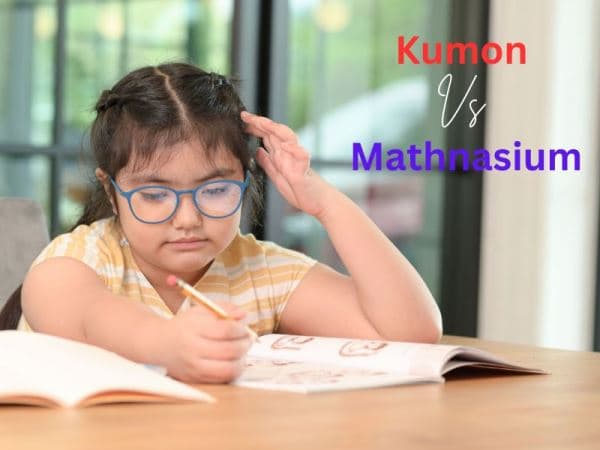Each child on earth is biologically born with a particular set of physical characteristics, a different genetic makeup, and a distinct level of mental fortitude.
Is not every child unique? In our opinion, yes. But what exactly do we mean when we refer to special needs children? It refers to any kid who needs additional assistance due to issues with their physical health or mental health or because of a learning disorder.
These children have special needs because they may require medication, counseling, or extra academic support — things most children rarely or never require.
Special needs comprise a wide spectrum of disorders, including learning impairments, dyslexia, autism, Down syndrome, dyscalculia, Attention Deficit Hyperactivity Disorder (ADHD), dysgraphia, and physical disabilities.

Image Source: Freepik
The severity of these conditions varies, and a child with special needs is considered a severe case when their IQ ranges between 20 and 35.
Teaching special needs children is a rewarding but challenging endeavor. Special education teachers educate students with developmental delays, physical disabilities, or learning disabilities.
These teachers frequently collaborate with other professionals like occupational therapists, psychologists, and speech therapists to offer their students comprehensive support. When it comes to beginning their career, they first complete a bachelor’s degree in special education or related domains.
After graduating, some professionals choose to pursue a masters degree in special education online since these programs provide greater flexibility and allow them to continue teaching while acquiring education. Obtaining a master’s in special education enables them to deliver more focused support and encouragement to children and address their specific needs.
Continue reading the blog for practical strategies to help provide support and quality education to special needs children.
Read Also: Why Early Reading is Bad For Your Child?
1. Use Digital Learning Tools
Special kids, especially those with ADHD, are easily distracted. Digital learning tools provide tailored solutions to address various learning challenges special needs children experience.
These tools encompass a range of applications and software to accommodate disabilities, including ADHD, autism, dyslexia, and physical impairments. They offer customizable interfaces and interactive lessons that cater to individual abilities and learning styles.
From speech recognition software to assistive reading apps, these tools encourage special needs kids to engage with educational content more effectively, fostering a love for learning and enhancing their independence.
With the right digital learning tools, teachers can create inclusive and supportive learning atmospheres that help students with special needs reach their full potential.
2. Incorporate Individualized Education Plans (IEPs)
IEPs are essential tools in special education, acting as thorough road maps customized to the particular needs of each special student.
IEPs are created jointly by teachers, parents, and experts. They include specific objectives, accommodations, and services that support individualized learning. These plans not only cover academic goals but also address the emotional, social, and behavioral components of education.
With IEPs, teachers can put targeted techniques into practice, alter their lesson plans, and offer the appropriate support, ensuring that children with special needs receive an inclusive and fair education.
These plans are not static but change with the children’s progress, encouraging a dynamic and responsive approach to the educational success of special needs students.

Image Credit: Freepik
3. Auditory Cues can be Effective
Special education educators can tailor lessons to each student’s learning style. Education for special needs kids does not have to be conventional for every student. These children should be given sufficient time to learn at their own pace.
Some of your kids will learn best through hearing, which implies that when concepts are delivered aloud, they are more easily understood and retained. They are even more likely to grasp knowledge when new concepts are combined with noises like drumbeats, music, whistling, or clapping.
You might be wondering how to identify auditory learners. Students with auditory learning styles often love music and remember songs they hear.
They can readily follow verbal instructions and frequently ask to explain something if they do not grasp it. Auditory learners usually prefer having a story read to them than reading it themselves.
Encourage your students to express things aloud if you believe they are auditory learners. For instance, a small spelling bee can allow your students to practice spelling words by pronouncing the letters rather than writing them down.
Getting some books on tape and encouraging the auditory learners in your class to read along with the spoken words of the story will also help them practice reading.
4. Pay Attention To Seating Arrangements
It is essential to consider how your special education class is seated. The easiest way to arrange the tables and chairs is in rows rather than a circle because children with ADHD and autism are easily diverted.
Make sure you keep the seats away from windows and doorways to prevent kids from being distracted, helping them stay more focused and attentive.
Check Also: Language initiation in deaf children
5. Use Visual Aids
Children with developmental disabilities are often visual learners. They learn better when their sense of sight is used.
Visual learners can learn from films, demonstrations, and classroom handouts and are fascinated by vivid colors and simple graphics. They like to paint and draw.
Provide your students with books if they learn best visually. You will observe that they will show interest in colorful images before they can read.
Stock up on art tools so kids may make visual representations of what they are learning to help them better retain information. Drawings can assist visual learners in recalling important details and pinpointing the facts of a story.
6. Recognize Any Kinaesthetic Learners in Your Classroom
Some special needs children may not be able to grasp information through auditory and visual tools; however, they absorb information best through movement, touch, and motion, meaning that to comprehend something, they need to feel it, move it, or touch it. These types of learners are called kinaesthetic learners.
You can identify your student as a kinaesthetic learner if they say, “Let me see it” or “Let me hold it.” They are the children who like building sets and interactive displays at the museums. Kinaesthetic learners often tear toys or other objects apart in curiosity to learn more about them.
Whenever possible, provide kinaesthetic learners with objects to hold. Physical math manipulatives, including base ten blocks and pattern blocks, can assist them in understanding a new math concept.
By providing letter magnets that they can move around, you may help your students practice spelling. Offer them the textured paper and a range of different-sized pens and pencils to pick from.
Conclusion
Educating children with special needs demands adaptability, unwavering devotion, and a steadfast dedication to inclusiveness. By following the strategies mentioned in this blog and fostering a supportive, individualized approach, teachers can empower children with special needs to reach their full potential and lead fulfilling lives.
It’s crucial to bear in mind that every student with special needs is exceptional, and the pursuit of attaining their educational and developmental milestones is a collaborative effort that can make a profound impact on their lives.


